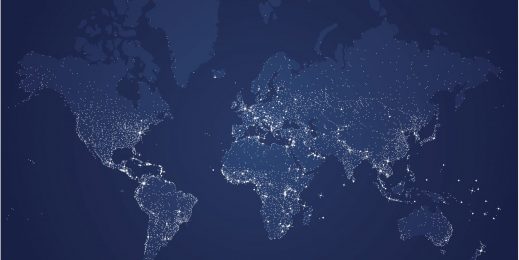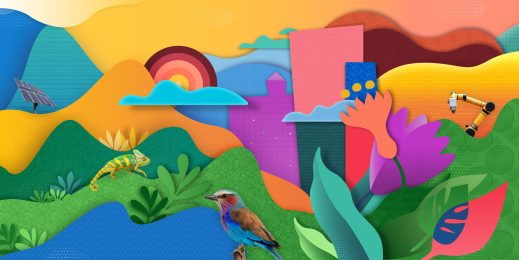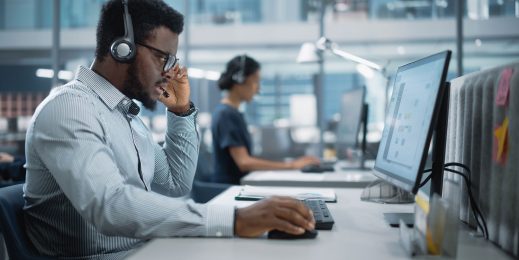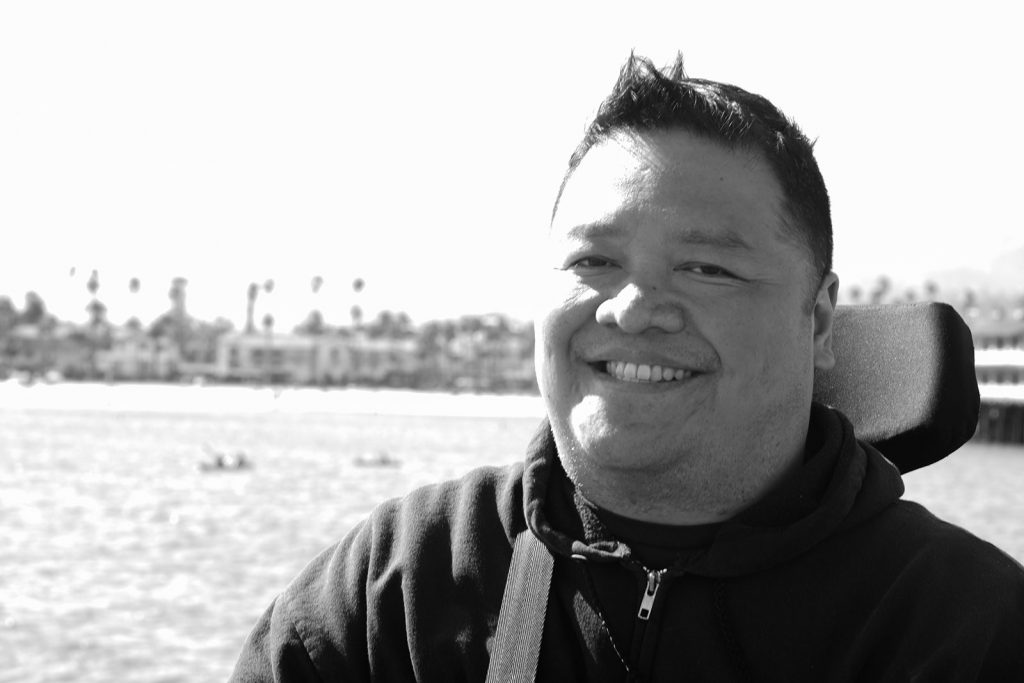
From disabled to super-abled with the help of technology
Thomas Edison, Albert Einstein, Stephen Hawking: besides being among the greatest scientific minds in history, these men had something else in common – they were all disabled.
Einstein, the mastermind behind the Theory of Relativity, had a learning disability.
If it weren’t for Edison, who was partially deaf, we wouldn’t have electric light or the foundations of the modern music industry.
If not for Hawking, who suffers from amyotrophic lateral sclerosis (ALS), we may not understand the universe at the level we do today.
In fact, much of the technology we use every day, including one of the first typewriters, audiobooks, vibrating phones, speech-to-text technology and predictive texting, was originally designed to help differently-abled people overcome physical and communication barriers.
August de los Reyes, former head of design at Xbox, feels people with disabilities have always sought to bring normalcy to their lives. Having become disabled at the age of 42 himself, he believes they are the original hackers, creating solutions that help people with disabilities live their lives as close to the majority as possible.
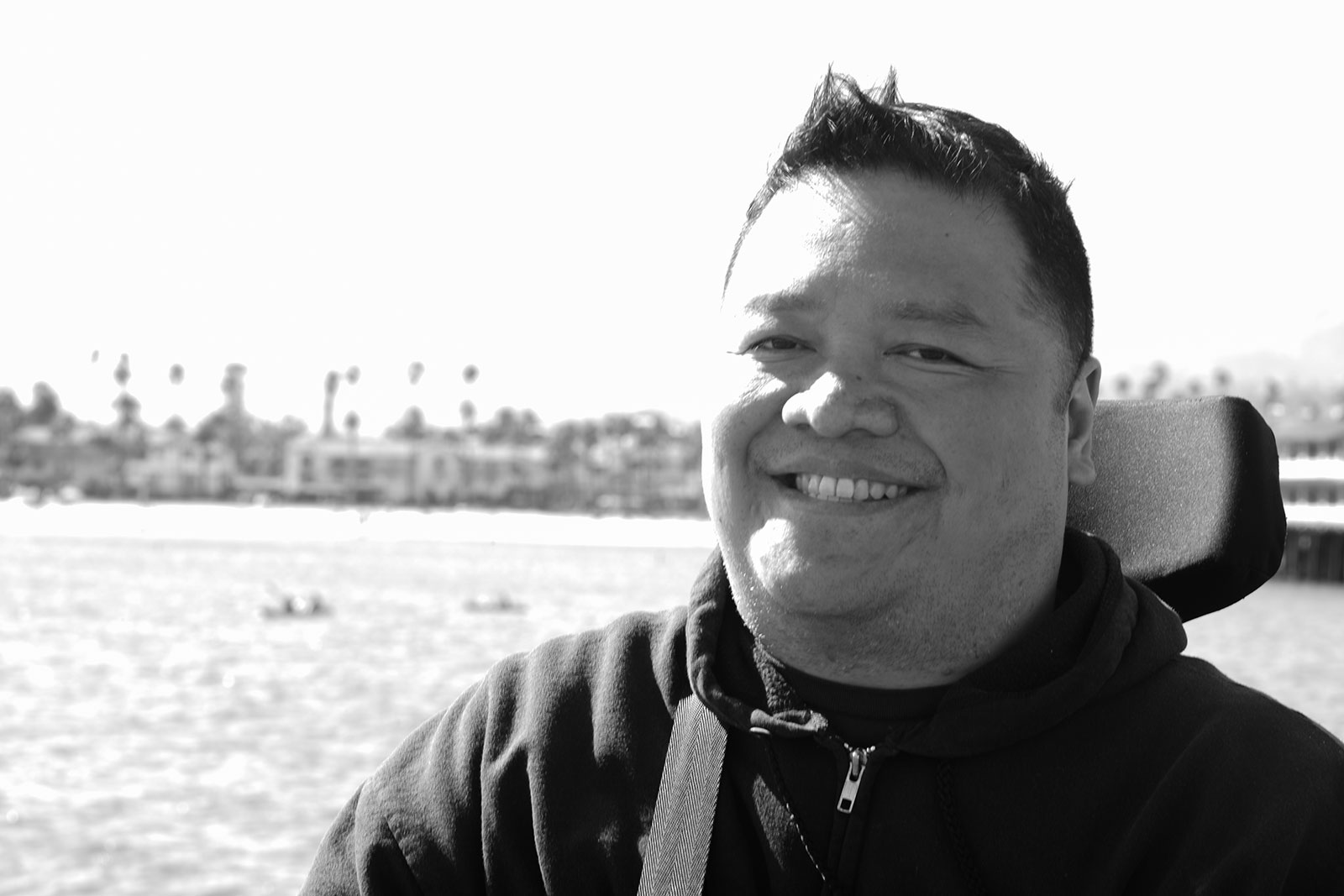
ASSISTIVE APPS
Smart software and applications are empowering the differently-abled to perform tasks they previously couldn’t, or had difficulty performing.
For Ingrid Parkin, Principal of the St Vincent School for the Deaf in Johannesburg, who is herself deaf, apps like Uber have empowered her to book a taxi without speaking to an operator. “Technology is the one place where the Deaf have the fewest communication challenges, if any,” she says.
Avaz, a communication app, helps children with autism and other communication challenges to express their needs and emotions through pictures. Meagan Ledger, a special needs teacher in Johannesburg, says many children with autism and other learning disabilities are non-verbal. They also struggle with writing as they have difficulties with fine motor coordination and motor planning. “Typing and using pictures is the easiest way for these children to communicate. They have a natural ability with technology and quickly learn how to express themselves using tablets, pictures and typing.”
A product of our environment?
According to the World Health Organisation, over a billion people – or 15 percent of the world’s population – have some form of disability.
After becoming disabled, de los Reyes realised that there was no ‘one-size-fits-all’ when it came to disability solutions. “The biggest challenge is reframing disability as a mismatch between one’s abilities and the environment. In other words, disability is designed.”
Does this suggest that disability can be un-designed?
Nicky Abdinor, a clinical psychologist and motivational speaker, who was born without arms and shortened legs, thinks so.
She says we will all become disabled one day, whether through injury or old age.

Nicky Abdinor is the founder of Nicky’s Drive, a non-profit organisation that helps fund car adaptations for differently-abled people. Nicky’s Drive has funded 15 projects to date.
“Our environment can make us disabled. But the more universally accessible our environment becomes, the less our different abilities will impact our inclusion in society,” says Abdinor.
Technology design is still biased towards those without disabilities, and assistive technology – which is meant to help the differently-abled function independently – remains prohibitively expensive and inaccessible to many.
But there’s a new breed of technology designers emerging. A community of tinkerers, hackers and activists who believe – and are proving – that when we design for the differently-abled first, we produce better products for everyone.
Reframing disability as super-ability
There’s a lot of hype around the potential of new and emerging technologies – such as artificial intelligence (AI), virtual reality, robotics and 3D printing – to transform how we work and live. A quick online search of these terms returns millions of results about how AI will help businesses to better serve their customers, or how virtual reality will produce an entirely new gaming frontier.
Beyond this, Melanie Lougee, research VP at Gartner, feels the power of these technologies lies in their potential to give differently-abled people super abilities that will leave the rest of us scrambling to keep up.
As we head deeper into the Fourth Industrial Revolution, research and innovation is accelerating at an unprecedented pace. Soon, says Lougee, people living with disabilities will benefit from a wide range of assistive technologies – including autonomous vehicles and 3D printing – that are being adapted to their individual needs.
Instead of being perceived as ‘different’, these technologies will help the differently-abled to be viewed as equals in the workplace and society.
Disabled by design
But when it comes to technology design – or any design, for that matter – accessibility is often an afterthought.
For 22-year-old Kyle Mollentze, who is wheelchair-bound due to cerebral palsy, getting out of the house takes a lot of planning. Few places are accessible by ramp or electronic doors. Yet it’s these small oversights that would make the world of difference, not only to Kyle, but also to mothers with pushchairs or deliverymen carrying heavy packages.
“Automation is an innovation that really opens up opportunities for those with physical challenges. Something as simple as an electronic sliding door is really transformative for everyone,” says Abdinor.
Mobile apps such as Entaleq could help Kyle and others who are wheelchair-bound to find venues that are easily accessible by wheelchair and to report those that are not.
The team at Microsoft Turkey has also been hard at work developing the MyLibrary app. Written by a visually impaired developer and tested by a visually impaired tester, the app makes it easy for anyone with a visual impairment to access the Bosphorus University online library and listen to over 20 000 audio books. Users can easily search for books and change the reading speed, and the developers plan to integrate voice control into future updates.
Similarly, in Kenya, Microsoft recently partnered with an NGO called InAble to provide assistive computer labs for visually impaired students in schools. Beginning at Likoni School for the Blind, the partnership aims to increase access to education for students with visual impairment.
Initiatives like these illustrate how simple tweaks to existing technology can prove life-changing for the differently-abled.
Abindor agrees. “Sending a voice note with no arms is quite a challenge,” she says. “It’s impossible to hold down the record button with your tongue and talk simultaneously – trust me, I’ve tried! A simple solution is to have a double-tap feature to start and stop recording.”
Reframing technology design
Simple solutions such as these are inspiring a growing community of hackers and hobbyists to reframe technology design, to prioritise universal access and ease of use.
By collaborating with the differently-abled – and designing for them first – this community is innovating, sharing knowledge and improving on prototypes to find solutions to the tasks many of us take for granted, like picking up a glass.
When Ivan Owen created a mechanical puppet hand for a Steampunk costume in 2011, he had no idea that his design would become the foundation for the world’s first 3D-printed prosthetic hand.
The evolution of a 3D-printed prosthetic hand
After an overwhelming response from people asking him to collaborate on prosthetic hands, Ivan self-studied 3D design and printing and came up with a prototype for the world’s first 3D-printed, fully-functional mechanical hand.
The first recipient of that hand was Liam, a South African boy who was born without fingers but today is one of thousands of people in more than 80 countries who have benefitted from Ivan’s decision not to patent his original design.
Thousands more people are also benefitting from the technology that enables Stephen Hawking to communicate – purely because the designs were open source. Ivan and his wife, Jen, have since created Enabling the Future, a global network of passionate volunteers using 3D printing to design, iterate and test low-cost prosthetic prototypes.
Prioritising affordability and accessibility
For Ivan, who worked as a medical receptionist, it didn’t seem right that assistive technology was prohibitively expensive for those who needed it most. He believes people shouldn’t be excluded from society or have their independence taken away because of affordability.
It’s a sentiment shared by Zulfiqar Aslam, a senior instructor in management information systems at the Al Ain University in UAE. For Aslam, cost-effective technology can empower physically challenged people but many cannot afford the high-end gadgets and robotic body parts that will enable them to perform routine tasks.
After observing a differently-abled student who first walked with the assistance of wooden legs and, later, expensive robotic legs, Aslam came up with a research idea that can help people with special needs in a simpler, better and more cost-effective way.
Aslam’s Smart Gesture and Control and Recognition Technology (Smart G-CRT) could be the next breakthrough in the field of prosthetics.
Existing prosthetic technology is based on human muscle or brain control activities, which Aslam says can be complicated, expensive and requires training, consultation and supervision from experts.
“Prosthetics equipped with Smart G-CRT, which comprises a nine-axis gesture control and recognition sensor and can be controlled using hand, leg and facial gestures – accurately, easily and above all, cost-effectively.” The technology can be commercialised to fit the needs of individuals, will be easily accessible, and can be fitted to any prosthetic.
Designing for inclusivity
“When designing for the disabled, you have to put yourself in their situation. Technology must be developed based on a user-centred design and approach. It must be easy to use, reliable, accessible and performance-oriented,” says Aslam.
For him, designing for the differently-abled requires a certain finesse: there’s no room for error; it must be safe to use, must perform exactly as intended, and must be environmentally friendly. Above all, it must not complicate things for people who are already physically or mentally challenged. He calls this ‘logic design’, which naturally results in better products for everyone – disabled or not.
Microsoft calls it ‘inclusive design principles’, an approach that reframes disability as an opportunity to put humans first when designing technology. It also aligns with its vision to empower every person on the planet to achieve more.
Engineers are using Microsoft technologies to create solutions that empower the differently-abled. One example is Microsoft Seeing AI, an application built on Cortana, Microsoft’s artificial intelligence APIs, which can describe people and objects to the visually impaired.
Microsoft Seeing AI describes people and objects and dictates text to visually-impaired users.
Hacking disability
Empowering people with disabilities is a driving force behind many of the hackathons that Microsoft supports. At gatherings like the Ability Summit and Hack4Good, engineers and designers work alongside people with disabilities to create products and services that solve challenges and result in designs that ultimately benefit everyone.
During one hackathon, a team of innovators from Microsoft partnered with former NFL player Steve Gleason, who is living with ALS, to create a solution that would allow him to steer his electric wheelchair using his eyes.
Hackathons force designers and engineers to think differently and to colour outside the lines, to innovate and create, and to unify for a common good.
For de los Reyes, if we don’t extend our ideas beyond our own experiences, innovation will be impossible. “Diversity in general is important to make breakthrough products and experiences – diversity in ability, age, background, gender and a variety of other factors is important for innovation,” he says. “Designers should seek out exclusion in existing offerings and use that misalignment as a starting point for innovation.”
It’s only through innovating, hacking, collaborating and sharing knowledge that we can promote greater independence for differently-abled people, increase their self-confidence and enthusiasm, and enhance their socio-economic, cultural and political participation.
Technology has the potential to break down barriers and to create a more equal society. For Stephen Hawking, without computers, his life could have had many more limitations and his scientific career would have been impossible.
And without computers, none of us would have benefitted from the contributions Hawking has made to science.





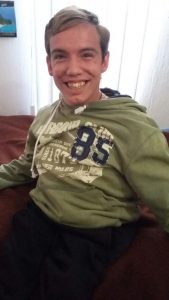
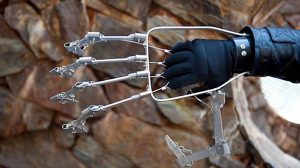
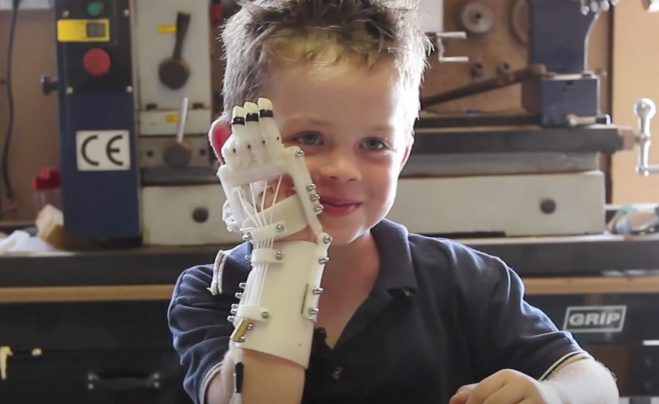
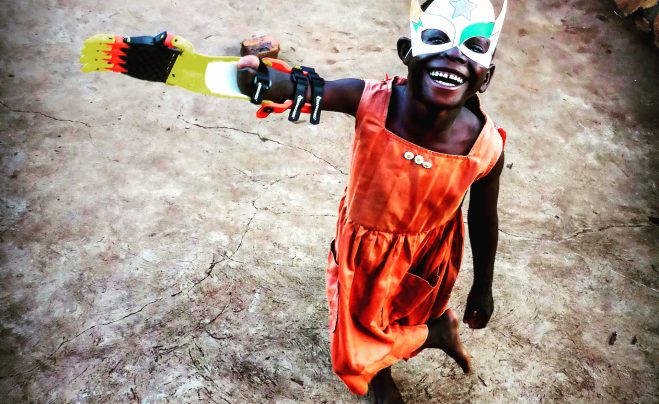
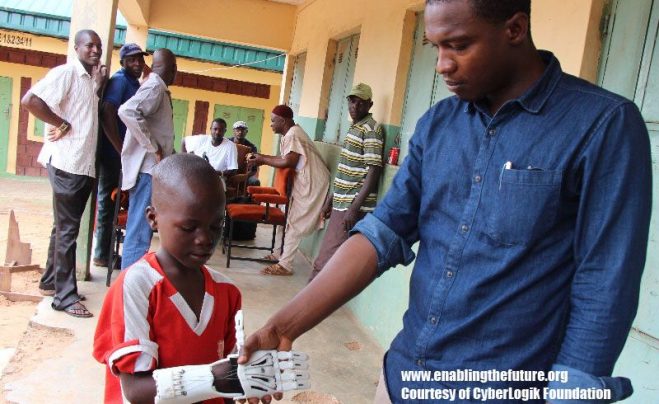
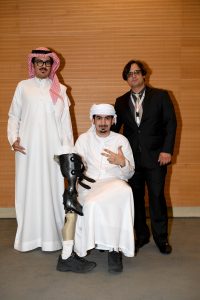





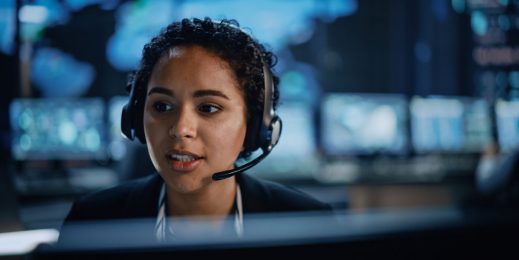
![A security team analyses key data from a visual dashboard.]](https://news.microsoft.com/wp-content/uploads/prod/sites/133/2023/04/Security-Sprint_TL_Banner-Image-519x260.jpg)
